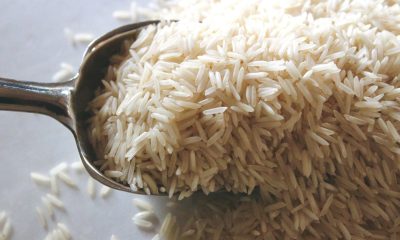Markets
Why Cocoa Traders Are Worried about Another Short Production Year
New York and London were lower Friday on speculative long liquidation. Trends remain mostly up as both cocoa markets are reflecting the lack of supply in the world market against demand from non-tradition-al sources along with traditional buyers. Production in West Africa could be reduced by 500,000 tons this year due to the extreme weather which included Harmattan conditions.
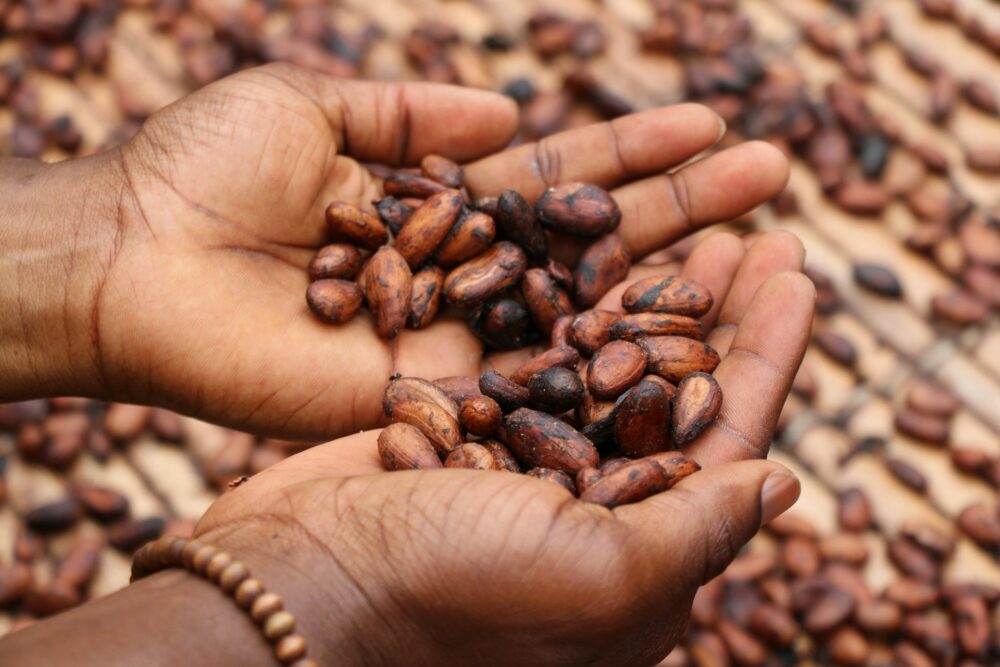
Wheat: Wheat was mostly lower last week in anticipation of a bad weekly export sales report that showed bad sales, but Chicago SRW closed slightly higher. Trends are still turning up in these markets. It looks like the current prices have accounted for most or all of the bad news to hit Wheat futures. USDA made no changes to its balance sheets last week. Big world supplies and low world prices are still around. Export sales remain weak on competition from Rusia, Ukraine, and the EU as those countries look to export a lot of Wheat in the coming period. It is warm in the US and Canada this week. Black Sea offers are still plentiful.
Weekly Chicago Soft Red Winter Wheat Futures
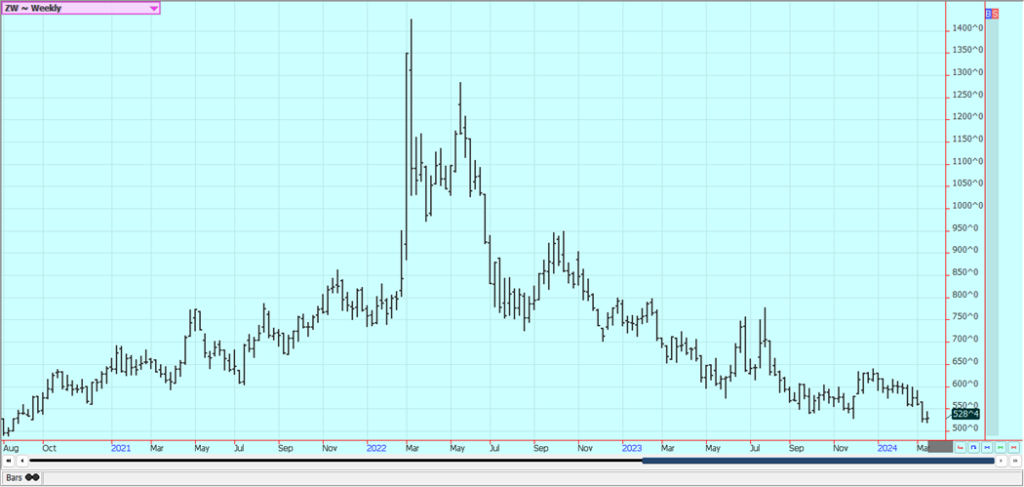
Weekly Chicago Hard Red Winter Wheat Futures
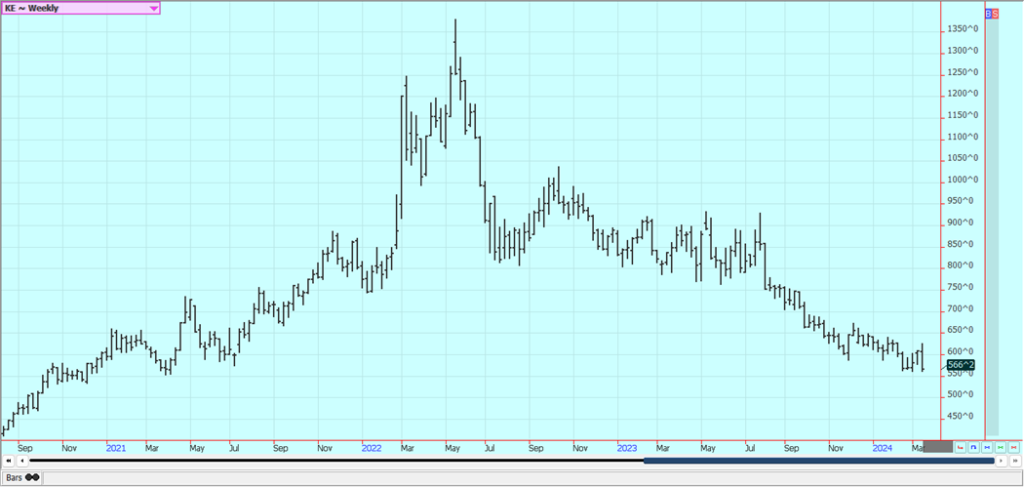
Weekly Minneapolis Hard Red Spring Wheat Futures
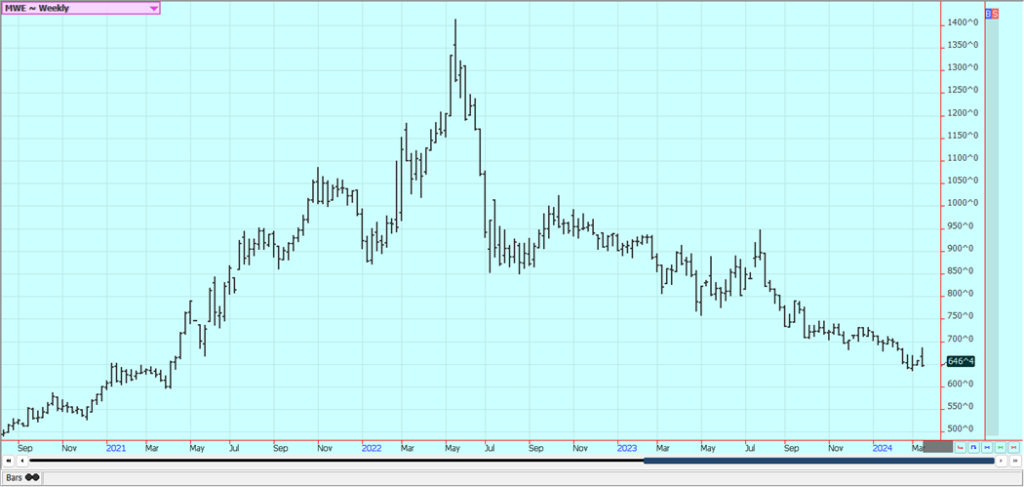
Corn: Corn was higher last week but Oats closed lower. Demand for Corn has been strong at lower prices and a weaker US Dollar. Big supplies and reports of limited demand are still around, but futures have been very oversold. Futures are much lower than just a few months ago and a short covering rally is increasingly expected and might be under way.
Funds remain very large shorts in the market. Basis levels have started to firm in the US as processors look for supplies amid tight farmer holding patterns. The weather forecasts for Argentina are improving with more showers and rains expected this week. More rain is forecast for central and northern Brazil The planting progress reports to date indicate rapid progress.
Weekly Corn Futures
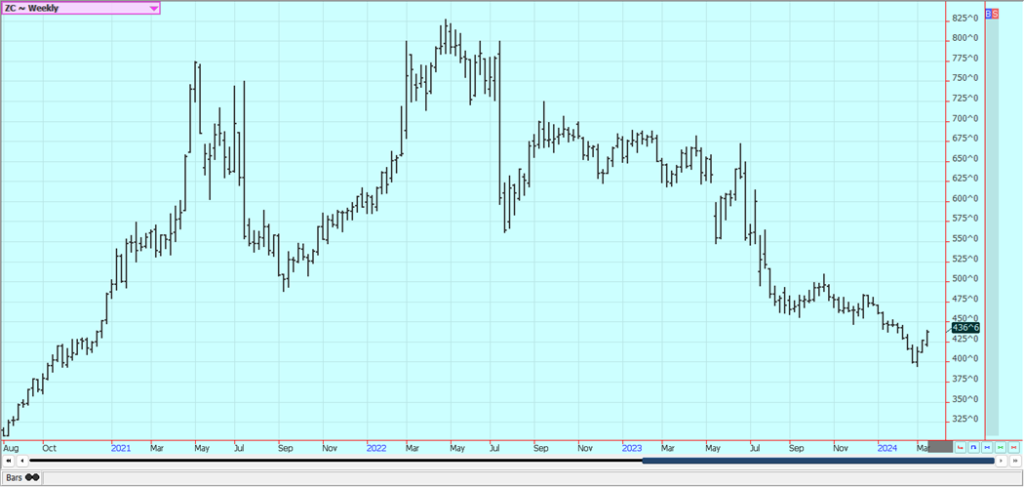
Weekly Oats Futures
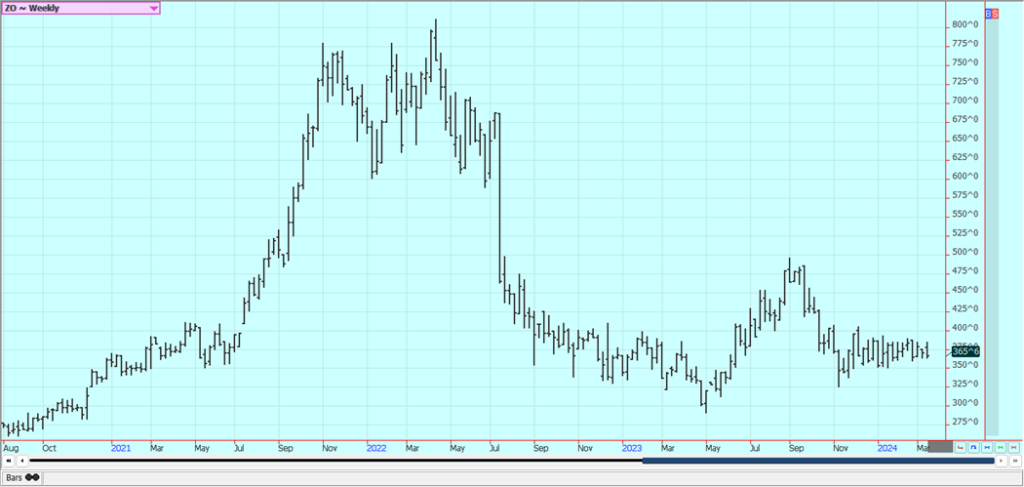
Soybeans and Soybean Meal: Soybeans and Soybean Meal closed higher last week despite ideas of weak export demand in the USDA reports released Thursday as the weather in Brazil became dry in northern areas again and as world demand for Brazil beans remained high. Reports of stronger basis levels and great export demand in Brazil provide some support.
Report indicate that China has been a very active buyer of Brazil Soybeans in the last week. Ideas that South American production is taking demand from the US have pressured futures lower. Funds remain very large shorts in the market. Basis levels in the country are reported to be firming as processors look for supplies and farmers remain tight holders. Rains are in the forecast in Argentina. Such rains would be beneficial for reproducing Corn and Soybeans.
Weekly Chicago Soybeans Futures
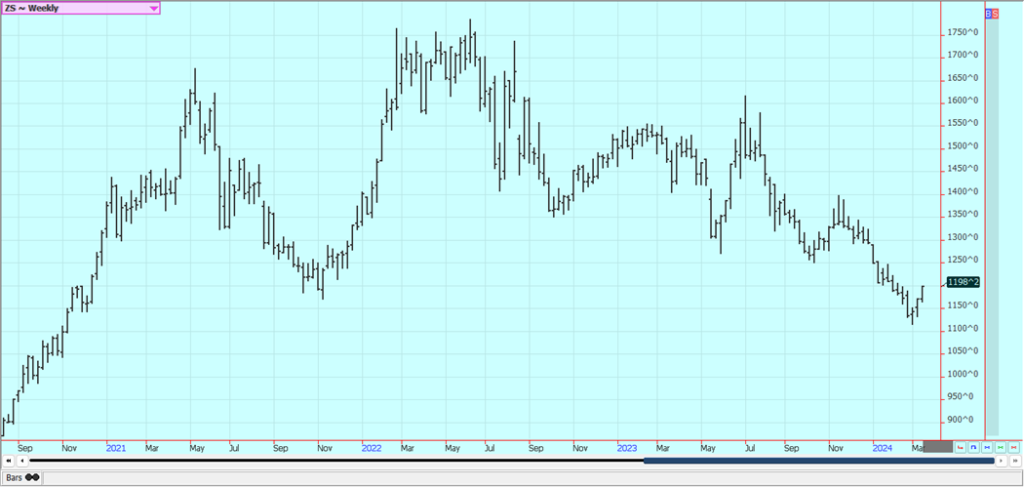
Weekly Chicago Soybean Meal Futures
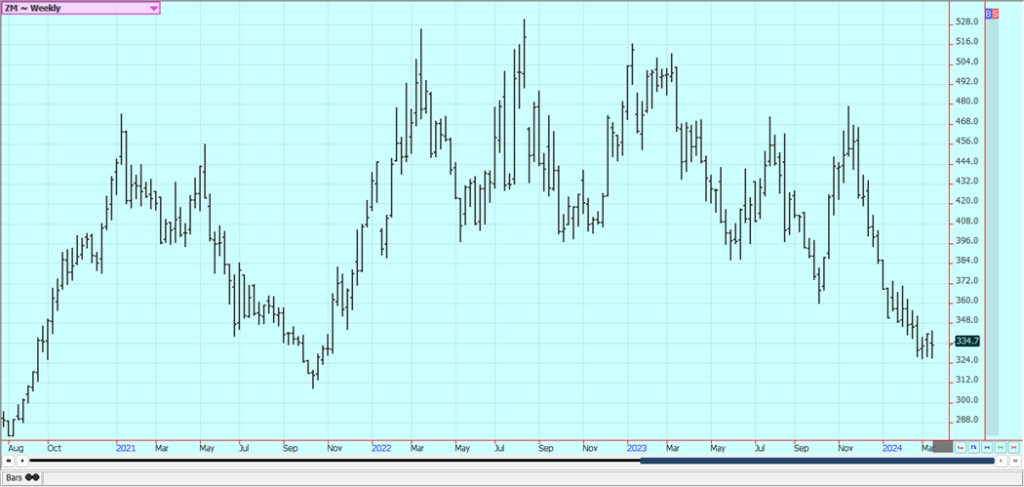
Rice: Rice closed higher last week and trends are sideways on the daily charts in this market. Good demand for export continues. The overseas markets feature less production in Brazil and India and it appears that the lack of offer from these markets is supporting increased demand for US Rice and prices here in the US. Warmer and wetter weather is expected this week and next on the Delta and Texas and soil moisture conditions for the next crop should improve.
Weekly Chicago Rice Futures
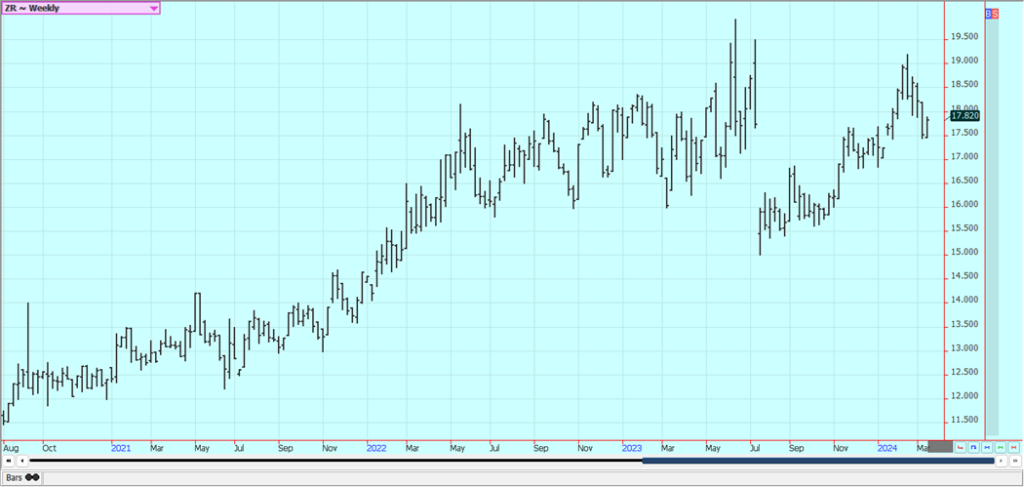
Palm Oil and Vegetable Oils: Palm Oil was higher last week on production problems in Southeast Asia and as the export pace is expected to really improve. Domestic biofuels demand is also likely to improve. Ideas of weaker production ideas against good demand still support the market overall.
The fundamentals of average demand against a weaker supply outlook are still around to keep prices supported. Trends are up on the daily charts. Canola was higher with Chicago and Malaysia. There are still forecasts for better rains in Argentina after a dry spell ends in a week or so and improving weather in Brazil. Current forecasts call for generally improved growing conditions in Brazil this week. The Canola crop is harvested, and it is in bins, so it will take some price movement to get new farm sales.
Weekly Malaysian Palm Oil Futures:
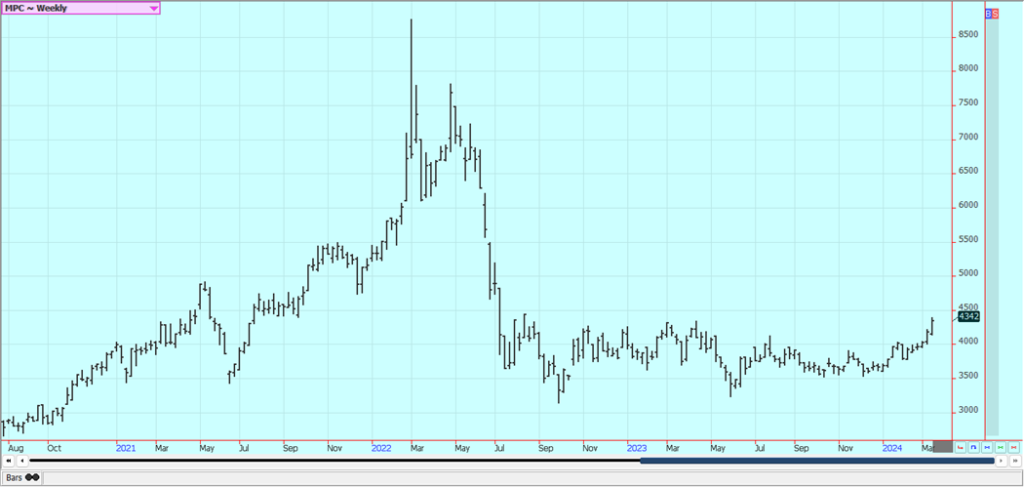
Weekly Chicago Soybean Oil Futures
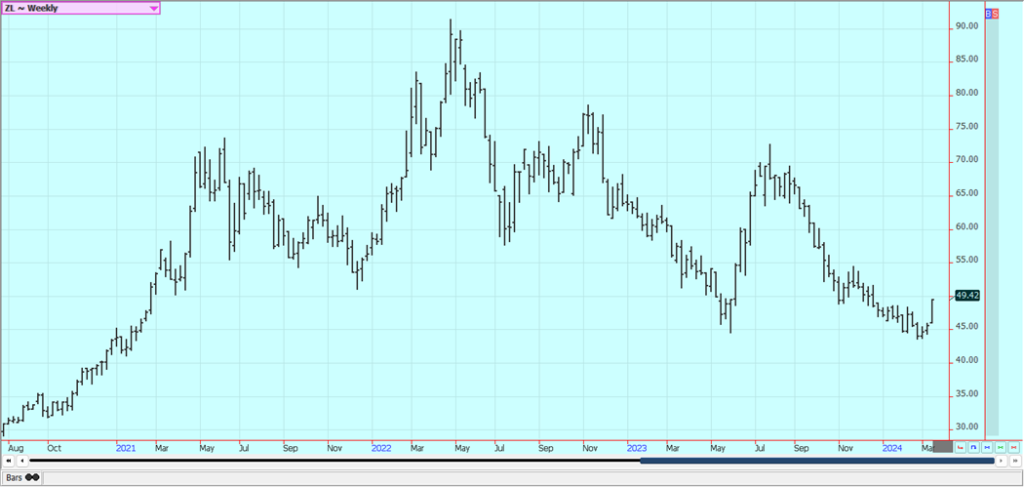
Weekly Canola Futures:
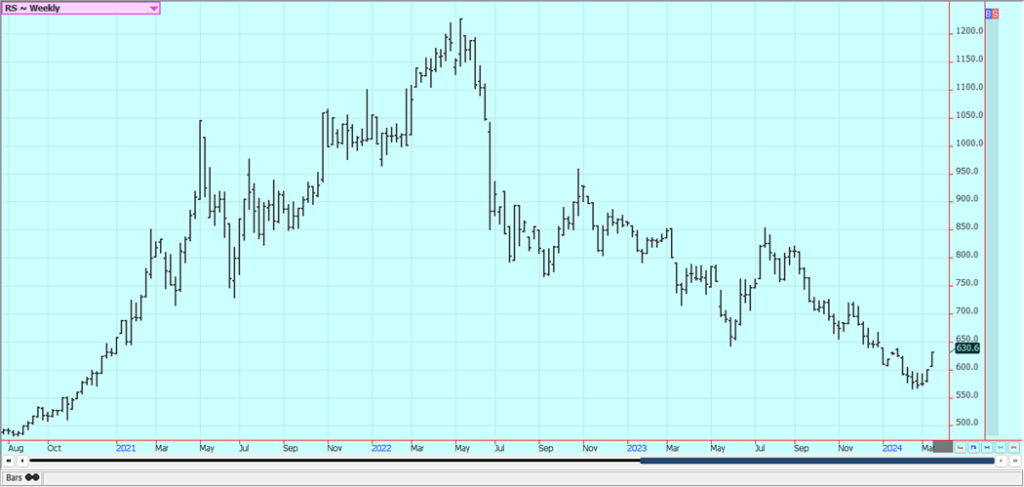
Cotton: Cotton closed lower last week and at new lows for the move on the weekly charts. It is too early to plant in Texas but the heat and dry weather raises concerns about production potential later in the growing season and blackened soils might not permit much planting, anyway. The demand news has been solid in this market for the last several weeks. The US economic data has been positive, but the Chinese economic data has not been real positive and demand concerns are still around.
Weekly US Cotton Futures
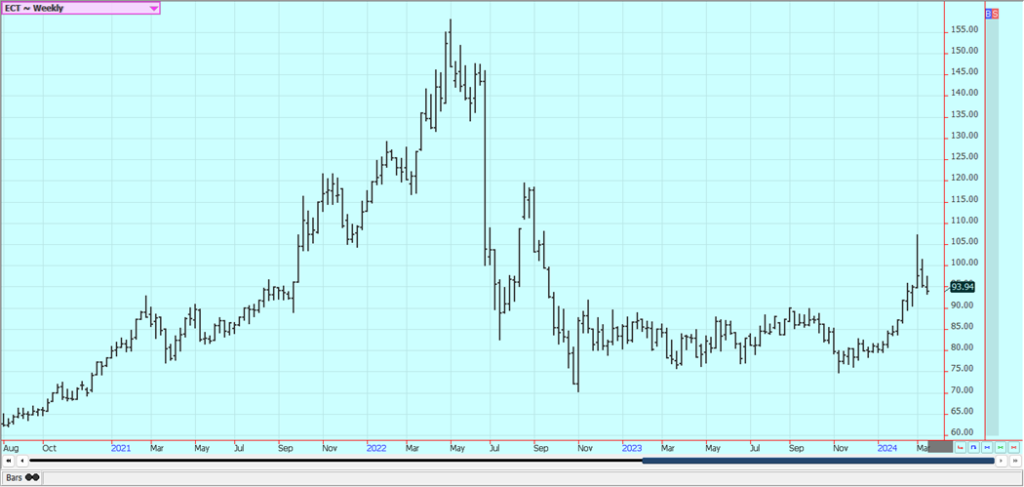
Frozen Concentrated Orange Juice and Citrus: FCOJ closed higher last week and the daily and weekly chart trends are mixed. Prices had been moving lower on the increased production potential for Florida and the US and in Brazil but is now holding as current supplies remain very tight amid only incremental relief for supplies is forecast for the coming new crop season.
There are no weather concerns to speak of for Florida or for Brazil right now. The weather has improved in Brazil with some moderation in temperatures and increased rainfall amid reports of short supplies in Florida and Brazil are around but will start to disappear as the weather improves and the new crop gets harvested.
Weekly FCOJ Futures
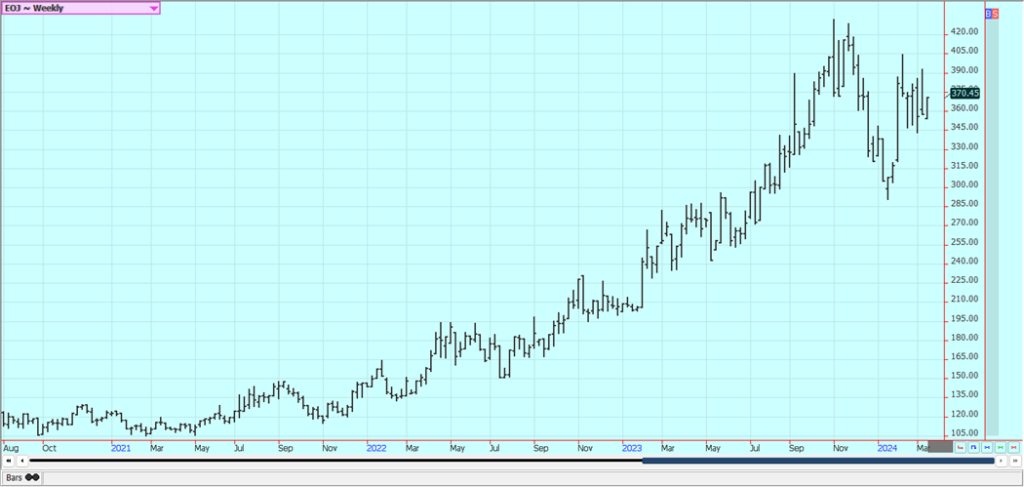
Coffee: New York and London closed a little lower last week. Robusta offers remain difficult to find and the lack of offer of Robusta is a bullish force behind the market action. Vietnamese producers are reported to have about a quarter of the crop left to sell with half a marketing year in font of them and reports indicate that Brazil producers are reluctant sellers as well as they apparently have already sold a lot. Brazil weather continues to improve for Coffee production and conditions are called good. Rains continued to fall in parts of Brazil Coffee areas. Brazil weather is good for the best crop production.
Weekly New York Arabica Coffee Futures
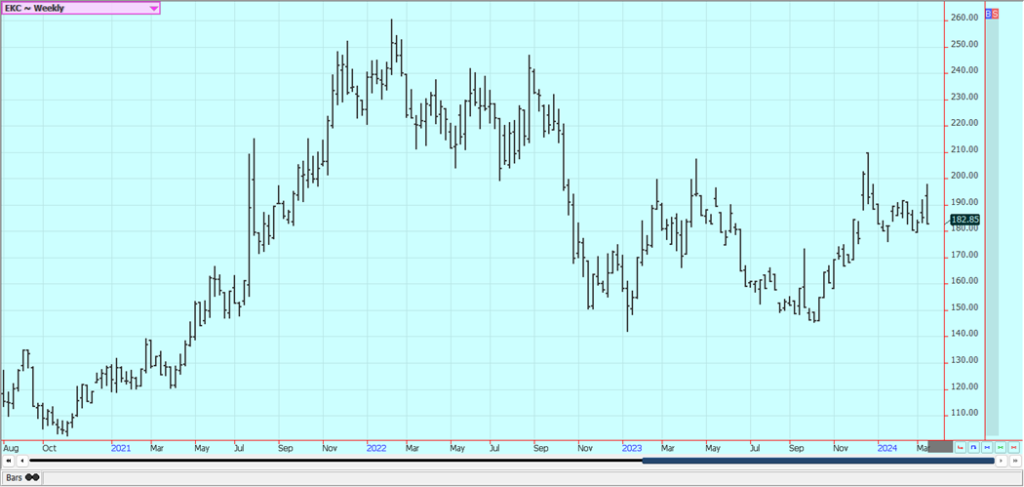
Weekly London Robusta Coffee Futures
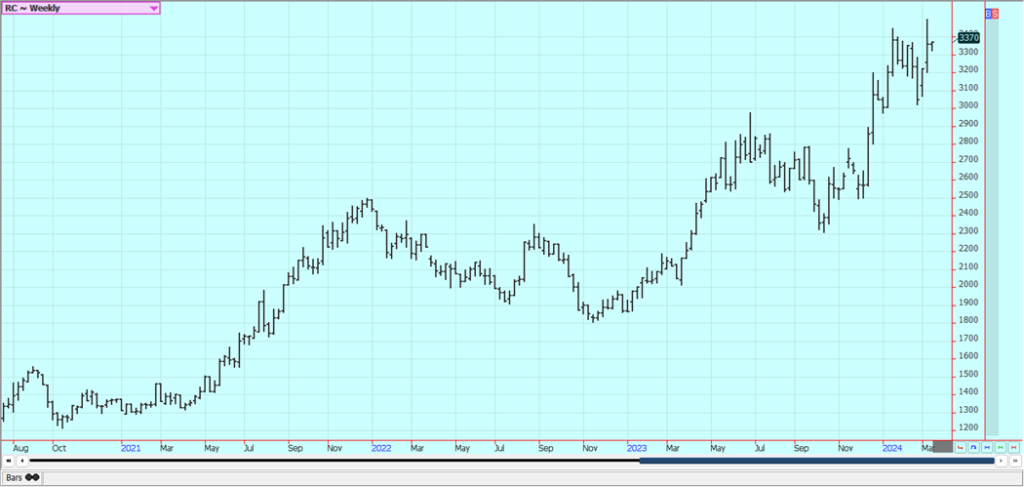
Sugar: New York and London closed higher last week with London the leader to the upside. Ideas of weaker demand are around the market and are causing the selling, but producers do not appear to be selling much. The market continues to see stressful conditions in Asian production areas although Indi-an production estimates are creeping higher and one source there estimates production at about 34 mil-lion tons, from 32 million before.
There are worries about the Thai and Indian production. Offers from Brazil are still active but other origins. are still not offering in large amounts except for Ukraine. UNICA aid that the center south Brazil Sugarcane crush was 552,000 tons in the second half of February, up 668% from the previous year. Mills produced 16,000 tons of Sugar and 329 million liters of Ethanol.
Weekly New York World Raw Sugar Futures
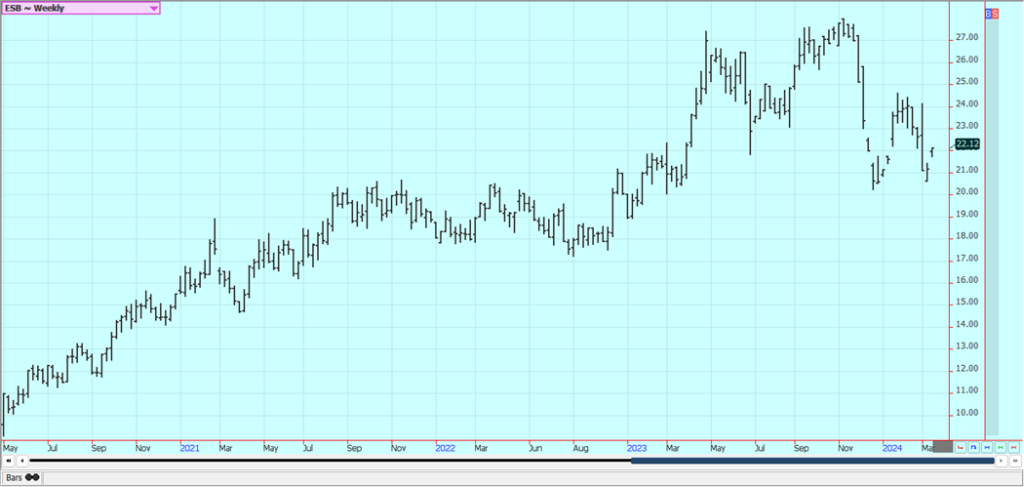
Weekly London White Sugar Futures
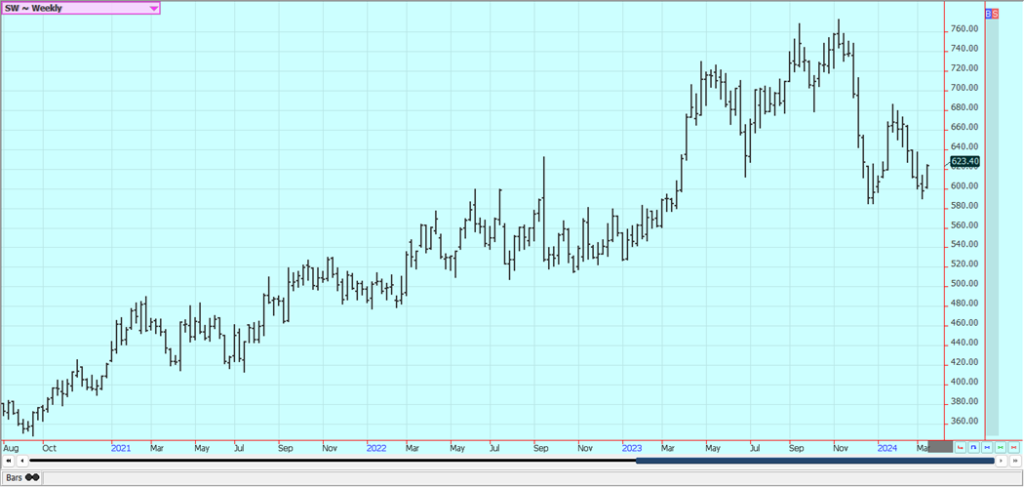
Cocoa: New York and London were lower Friday on speculative long liquidation. Trends remain mostly up as both markets reflecting the lack of supply in the world market against demand from non tradition-al sources along with traditional buyers. Production in West Africa could be reduced by 500,000 tons this year due to the extreme weather which included Harmattan conditions.
The availability of Cocoa from West Africa remains restricted and projections for another production deficit against demand for the coming year are increasing. Traders are worried about another short production year and these feelings have been enhanced by El Nino that is threatening West Africa crops with hot and dry weather. Ideas of tight supplies remain based on more reports of reduced arrivals in Ivory Coast and Ghana con-tinue. Demand continues strong, especially from non traditional buyers of Cocoa.
Weekly New York Cocoa Futures
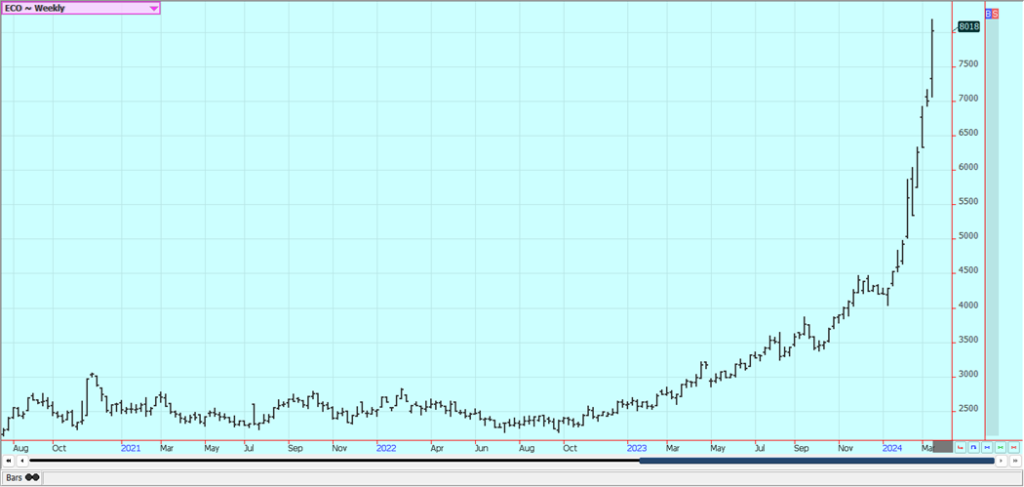
Weekly London Cocoa Futures
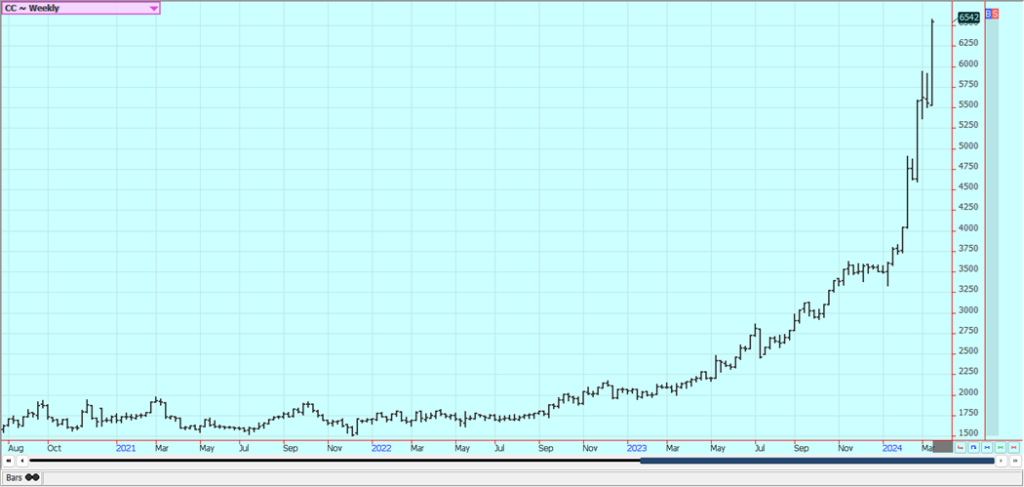
__
(Featured image by Etty Fidele via Unsplash)
DISCLAIMER: This article was written by a third party contributor and does not reflect the opinion of Born2Invest, its management, staff or its associates. Please review our disclaimer for more information.
This article may include forward-looking statements. These forward-looking statements generally are identified by the words “believe,” “project,” “estimate,” “become,” “plan,” “will,” and similar expressions. These forward-looking statements involve known and unknown risks as well as uncertainties, including those discussed in the following cautionary statements and elsewhere in this article and on this site. Although the Company may believe that its expectations are based on reasonable assumptions, the actual results that the Company may achieve may differ materially from any forward-looking statements, which reflect the opinions of the management of the Company only as of the date hereof. Additionally, please make sure to read these important disclosures.
Futures and options trading involves substantial risk of loss and may not be suitable for everyone. The valuation of futures and options may fluctuate and as a result, clients may lose more than their original investment. In no event should the content of this website be construed as an express or implied promise, guarantee, or implication by or from The PRICE Futures Group, Inc. that you will profit or that losses can or will be limited whatsoever. Past performance is not indicative of future results.
Information provided on this report is intended solely for informative purpose and is obtained from sources believed to be reliable. No guarantee of any kind is implied or possible where projections of future conditions are attempted. The leverage created by trading on margin can work against you as well as for you, and losses can exceed your entire investment. Before opening an account and trading, you should seek advice from your advisors as appropriate to ensure that you understand the risks and can withstand the losses.

-

 Biotech3 days ago
Biotech3 days agoMedical Research in 2025: A Turning Point for Precision and Personalized Medicine
-

 Markets2 weeks ago
Markets2 weeks agoDow Jones Strength Faces Risk From a Potential Yen Carry Trade Unwind
-

 Impact Investing1 week ago
Impact Investing1 week agoChristmas Plastic Waste and the Path to Circular, Low-Emission Solutions
-

 Africa2 days ago
Africa2 days agoDamane Cash and FMSCD Partner to Enable Cash Advance in Exchange Offices




